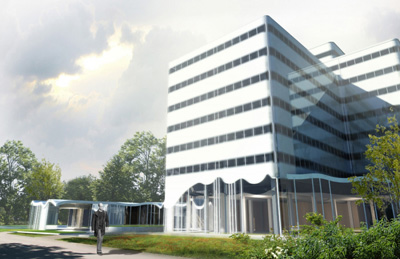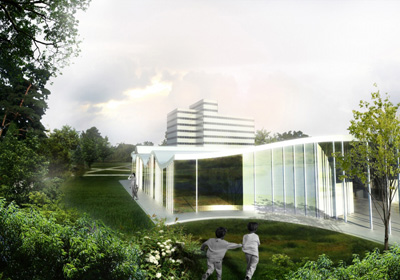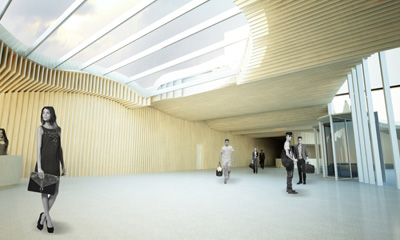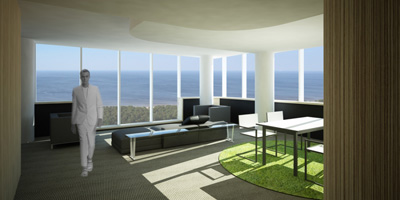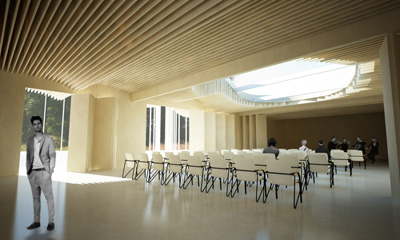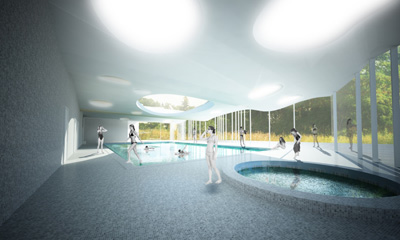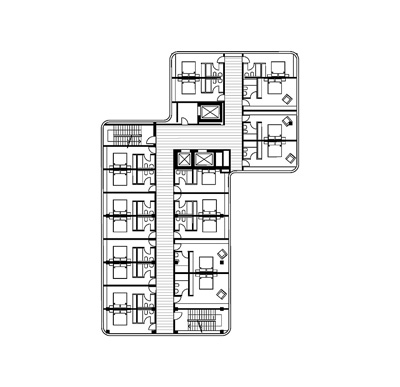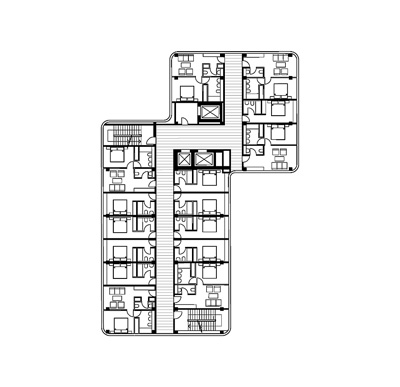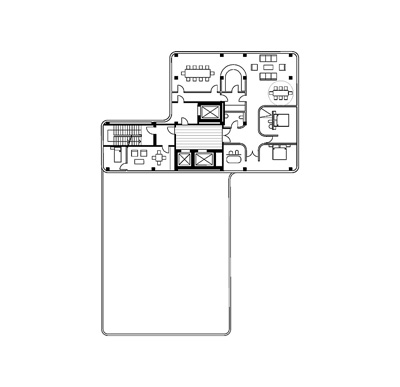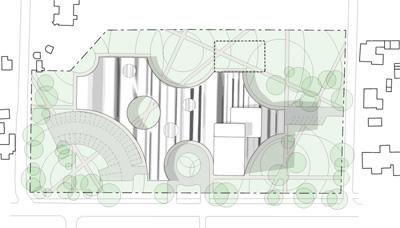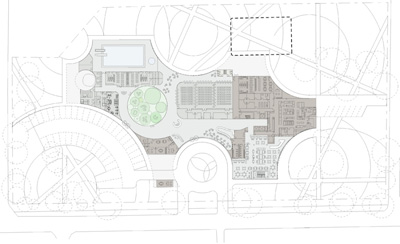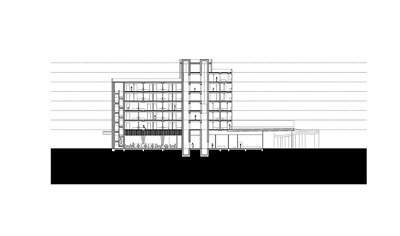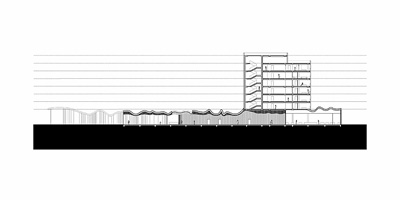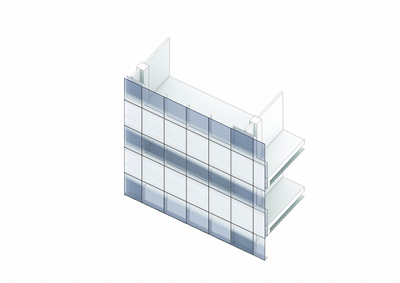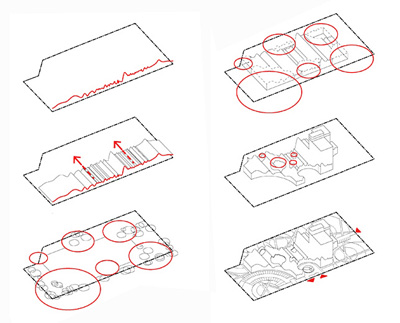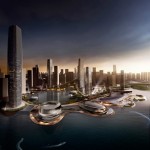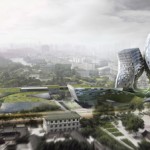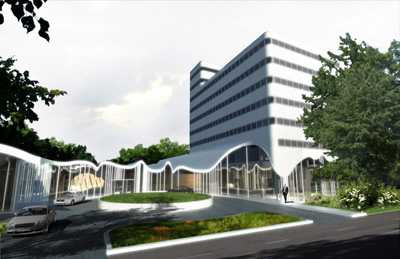
Project: Hotel Liesma
Designed by INDEX Architecture
Design Team: John Doyle, Laura Mártires, Edmund Carter, Ben Milbourne (BILD Architecture)
Site Area: 15 041 sqm
Total GFA: 8 583 sqm
Client: Hotel Liesma
Location: Jurmala, Latvia
Website: www.studioindex.com.au
Australia based INDEX Architecture shares with us their proposal for the music themed Hotel Liesma, the design includes 130 rooms, restaurant, conference hall and various health club facilities. For more images and architects description continue after the jump:
From the Architects:
The human experience of nature’s rhythms; the ocean, the wind, is intrinsically tied to music, with these natural frequencies, resonating at some level within us. The coastline and surrounds of the hotel site is in many ways a musical landscape, both in terms of its aural qualities (the sounds of wind and waves) but also in its natural forms – the shapes of waves and sand dunes physically capturing their frequency; their natural music.

Waveform captures this notion of natural music; translating a musical sample to physical form, one that echoes and harmonises with this coastal landscape ? a building that is both physically and poetically embedded in its landscape. The point of departure for the project is the opening sequence of Richard Wanger’s “Der fliegende Holländer” (the Flying Dutchman), a piece closely tied to the composer’s time in Latvia, but also expressive of the power and majesty of the ocean. This musical sample was graphically visualised and then used in a variety of forms throughout the design. The graphic visualisation, or Waveform, is aligned to the site and extruded to provide the roof shape and undulating ceilings of the hotels public spaces. Viewed from the exterior these forms the white dunes of Jurlama’s costal landscape.
The existing site of hotel has a number of significant trees and other vegetation that is well worth preserving. The key site strategy is to identify these key moments, and celebrate them The key site strategy for the project was identifying where to locate the building, but rather identifying where NOT to build – moments of preservation within the site. These zones are subtracted from the extruded wave form, creating courtyards within the building, drawing light deep into the floor plate and providing entry and car parking facilities.
The public spaces of the project are distributed along the ground level, with no basement or secondary levels. Access to the lift lobby is provided directly from the main entrance, with restaurant access close to the main guest lifts, providing easy access for breakfast and evening meals. The kitchen, staff and housekeeping areas are contained behind the lift cores with direct access to both the restaurant and conference/banqueting areas, with a dedicated passageway to service the lobby bar.
The conference centre is accessible via a dedicated service desk from the main lobby, with three large multi?use halls that can be combined and reconfigured to allow for different arrangements, includinglive music performance. All conference facilities are serviced directly from the back of house, and open onto the naturally lit break out space that looks on the landscape. The pool and health club is accessed via a corridor which runs around the main courtyard, which also contains an easily supervised children’s play area. Male and Female locker rooms are adjacent to a large pool and communal Jacuzzi, as well as gymnasium, massage cabinets and sauna rooms featuring showers and plunge pools.
The tower re?uses the existing tower structure on the site, but proposes the integration of a new additional lift core to provide a service lift for the hotel. The design calls for the removal of the existing facade and the provision of a new fully insulated and thermally broken curtain wall system. Within the new hotel, basic and family rooms are located to the bottom floors, with the large suites located at the corners of the building and the upper floors. The ninth floor is fully reserved for a presidential suite with a customised layout and orientation toward the sea views to the north.
The façade of the public areas is a conscious reference to Iannis Xenakis, famous for his integration of architecture and music, in particular his undulating (or harmonious) glass facades developed for the Saint Marie de La Tourette monastery. These techniques has been adapted for waveform hotel, with the Handel waveform translated into the compression and expansion of the mullions along the façade – effecting a subtle visual rhythm and articulation.
Although the ground level public areas of the building appear formally dynamic, the construction technology to achieve this effect is conventional and therefore cost effective. The waveform roof is a simple extrusion along the short axis of the building, allowing for the use of curved Laminated Veneer Lumber (LVL) beams and a simple column grid as the primary structure, supporting timber roof purlins, layered plywood and roofing membrane as the roofing surface. Insulation appropriate to the climatic conditions to be integrated into the roof construction to ensure thermal comfort and the environmental performance of the building.
The tower façade translates the Waveform motif vertically, though the application of a ‘fritted’ ceramic interlayer embedded in the glass. Although an extremely conventional glass curtain wall, with all the advantages of ease of construction, integration of insulation and cost, the façade is strikingly original and visually arresting.


